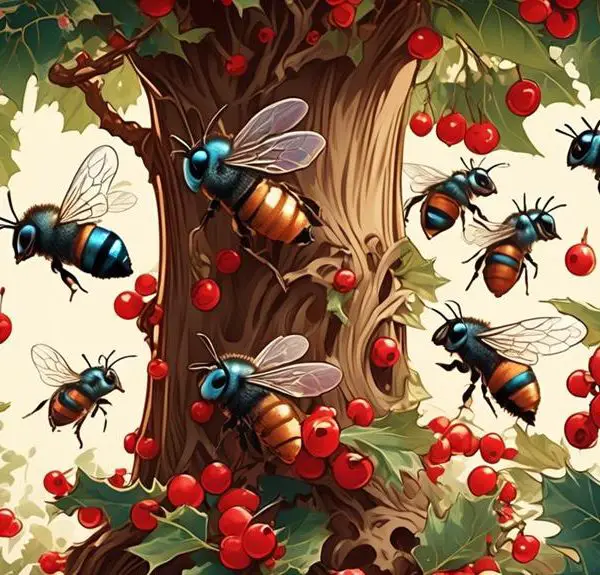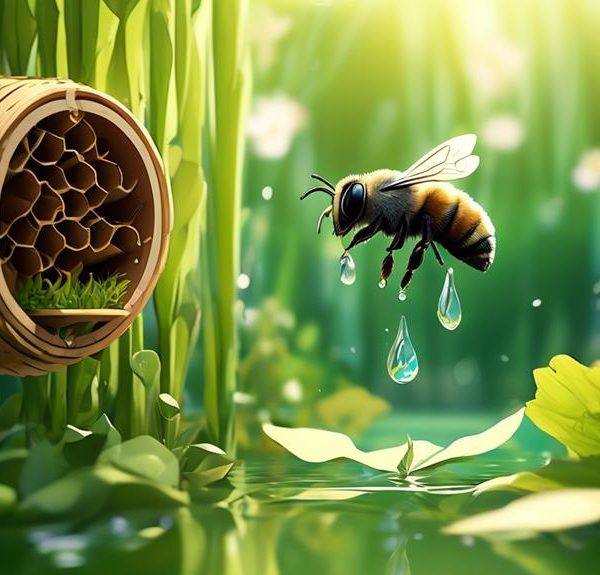Investigate the captivating relationship between mason bees and marigolds, and discover the secret behind their bustling activity in your garden.
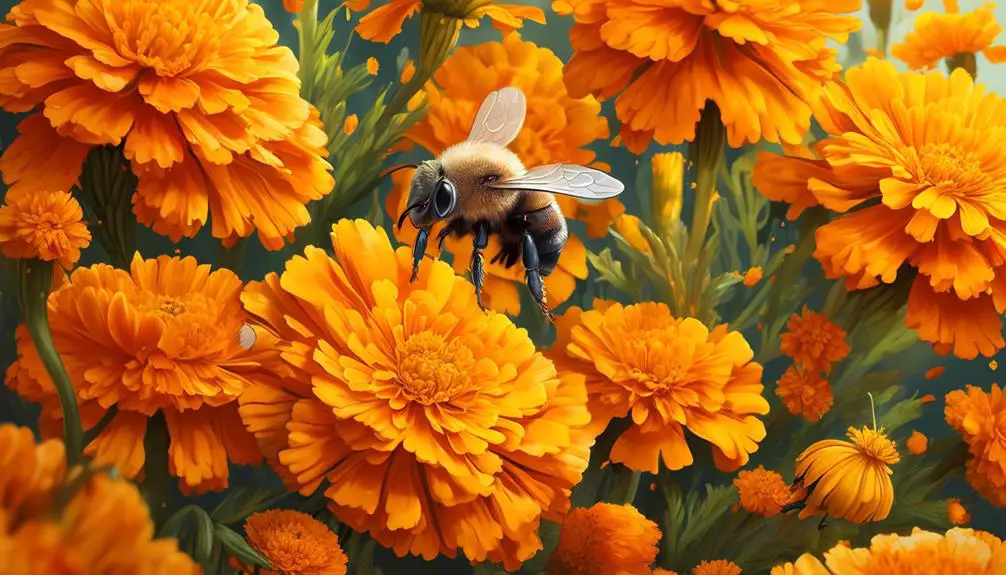
Do Mason Bees Like Marigolds?
Imagine you're a beekeeper, and you've just noticed a bustling activity of mason bees around your flower bed, particularly the vibrant marigolds.
Now, this may raise your curiosity about whether there's a special connection between mason bees and marigolds. It's not uncommon to wonder about such relationships, especially when you're trying to create an inviting ecosystem in your garden.
It's like piecing together a puzzle where every creature plays a crucial role. But does the marigold really hold a special place in the heart of a mason bee?
Let's explore this intriguing interplay of nature further.
Key Takeaways
- Mason bees are attracted to marigolds due to their bright colors and potent fragrance.
- Marigolds provide a rich source of nectar and pollen for mason bees.
- Mason bees aid in cross-pollination as they collect nectar and pollen from marigolds.
- The symbiotic relationship between mason bees and marigolds enhances biodiversity and promotes ecological balance in the garden.
Understanding Mason Bees
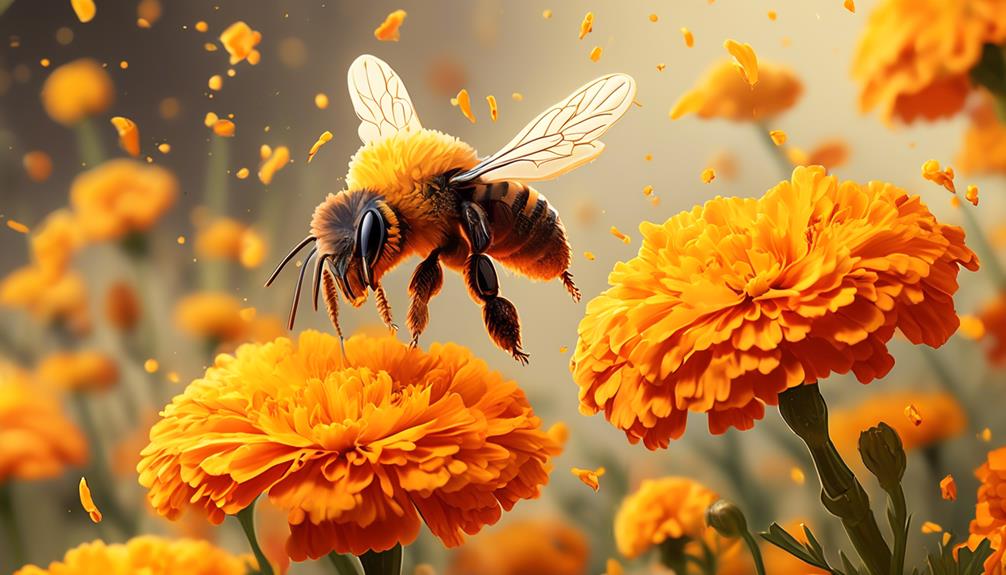
Before dawn, you'll often find Mason bees busily collecting nectar and pollen, demonstrating an industriousness that's unmatched in the insect world. Unlike honeybees that live in colonies, Mason bees are solitary creatures. They don't produce honey or beeswax, but they're essential in pollination, often outperforming their social counterparts.
You'll notice their distinctive nests in hollow reeds or cracks in wood, filled with mud. That's how they got their name, you see, from their masonry-like nesting behavior. Females use their strong mandibles to collect mud, shaping it into cells for their offspring. They're dedicated builders, and each cell is provisioned with a mixture of nectar and pollen for the larvae to feed on.
The female Mason bee lays an egg in each cell, seals it with mud, and then moves on to creating the next one. It's a meticulous, laborious process, but one that ensures the survival of the next generation. This makes them invaluable assets to the ecosystem, especially in areas where pollinators are in short supply.
The Allure of Marigolds
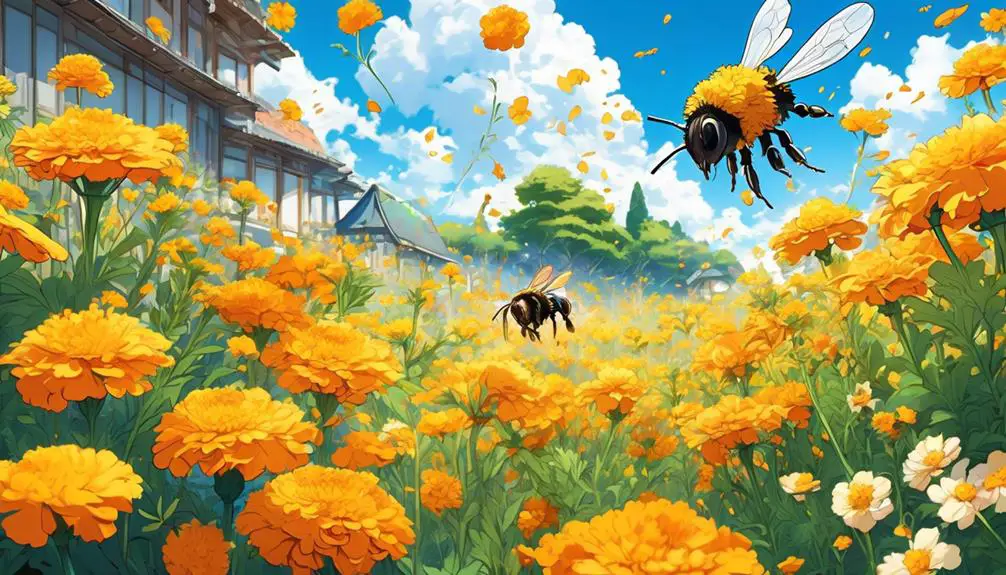
Have you ever wondered about the allure of the vibrant Marigolds that dot gardens and parks worldwide? These flowers aren't just pleasing to the eye; they're a beacon for various pollinators, including the mason bees. Their radiant colors, coupled with their distinct, honey-like scent, act as irresistible attractants.
Color | Fragrance | Factor in Attraction |
|---|---|---|
Vibrant Orange | Honey-like | Visual & Olfactory Lure |
Bright Yellow | Sweet | Stimulates Bee Vision |
Deep Red | Mild | Enhances Visual Appeal |
Varied | Varied | Diversity Attracts a Range of Pollinators |
Marigolds offer more than just beauty and allure. They're scientifically proven to be rich in nectar and pollen, vital food sources for mason bees. Their petals serve as landing platforms, making them easily accessible. Furthermore, they're hardy and easy to grow, making them a staple in many gardens.
Mason Bees and Flower Preferences
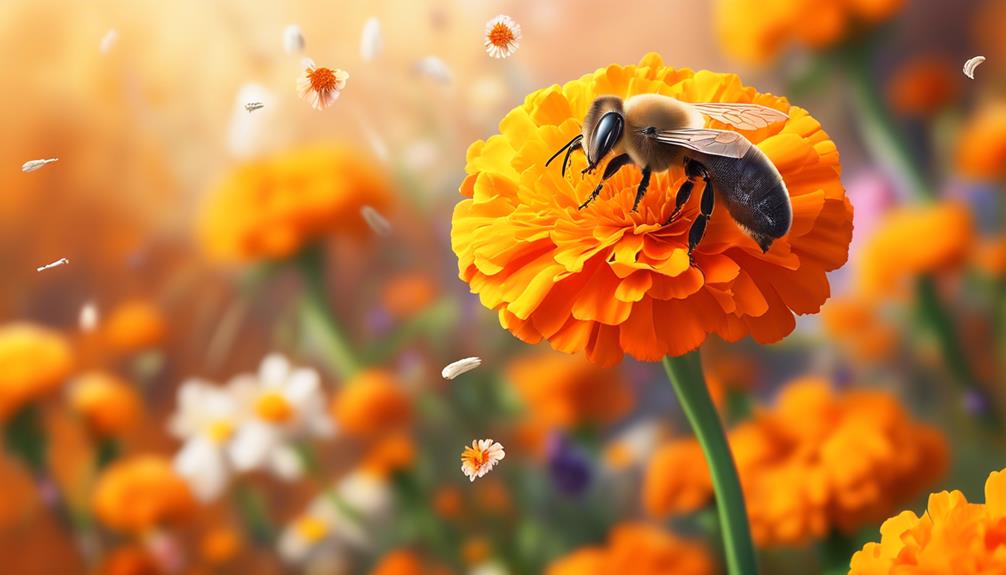
In their quest for nectar and pollen, mason bees exhibit distinct preferences for certain flowers, with marigolds often topping their list. These industrious insects are attracted to the bright colors and rich nectar of marigolds. But what makes these flowers so appealing?
Marigolds, with their vibrant orange and yellow hues, are easily seen by mason bees. Their petals are also ideal for these bees as they provide a landing platform from where they can easily access the nectar and pollen. But it's not just about the visuals. The scent of marigolds is also a strong attractant for mason bees.
Apart from marigolds, mason bees are also drawn to other flowers such as fruit trees, especially those of the Rosaceae family, and spring-flowering plants. They're particularly fond of plants that bloom early in the season, when the females are laying their eggs.
But remember, while mason bees have their favorites, they're not too picky. They'll visit a wide variety of plants to satisfy their nutritional needs. So, if you're planning a garden to attract mason bees, include a variety of plants that flower at different times of the year.
Interaction Between Mason Bees and Marigolds
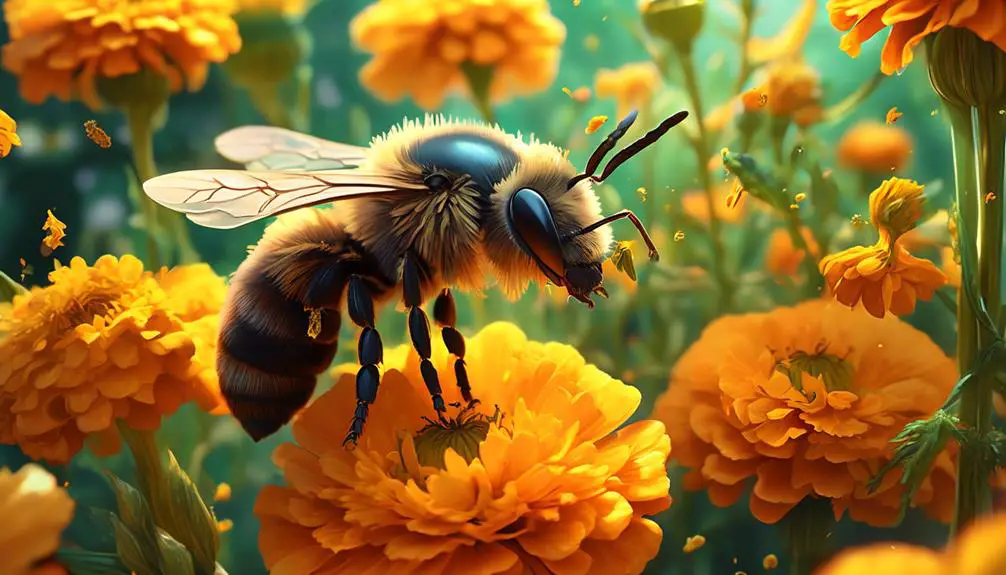
While it's clear that mason bees are attracted to marigolds, let's now explore the intricacies of this relationship and how these interactions benefit both the bees and the flowers. Marigolds, with their bright colors and potent fragrance, draw in the bees. This symbiotic relationship begins with the flowers providing nectar and pollen, which are critical food sources for the bees.
In return, mason bees play a crucial role in pollination. As they move from flower to flower collecting food, pollen sticks to their bodies and is subsequently transferred to the stigmas of other flowers. This aids in the cross-pollination and the production of seeds, ensuring the survival and propagation of marigolds.
Here's a helpful table to illustrate this interaction:
Mason Bees | Interaction | Marigolds |
|---|---|---|
Attracted to bright colors and fragrance | Pollination | Provide nectar and pollen |
Collect nectar and pollen for food | Cross-Pollination | Produce seeds through pollination |
Help in seed production | Symbiosis | Ensure survival of mason bees |
Understanding this relationship is key to appreciating the role of mason bees in the ecosystem and the survival of marigold species.
Impact on Your Garden's Ecosystem
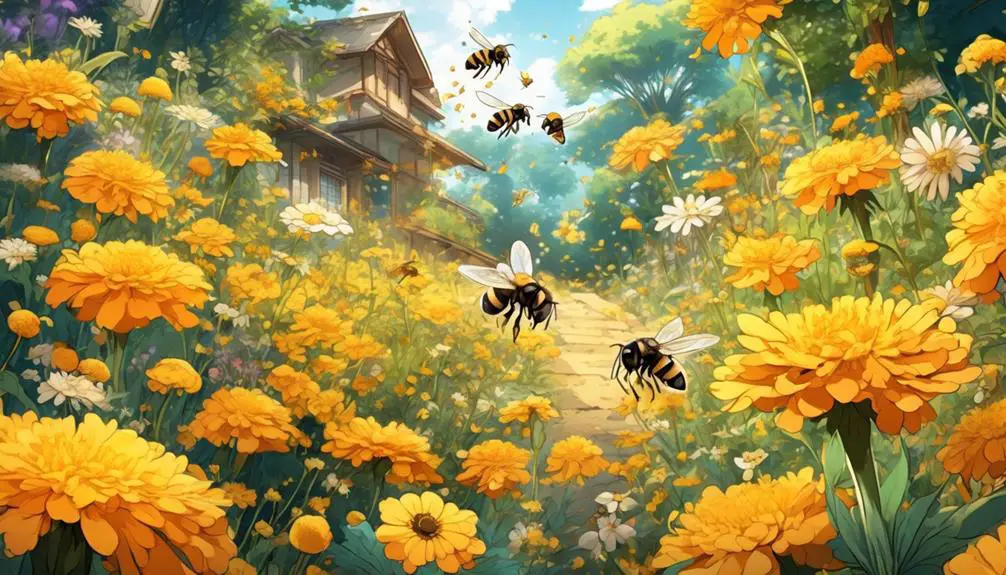
You'll notice a significant transformation in your garden's ecosystem once you introduce mason bees and marigolds, as these two key players work in symbiosis to enhance biodiversity and improve plant health.
Mason bees, unlike their honeybee counterparts, are solitary creatures that don't produce honey but are remarkable pollinators. They're attracted to marigolds' vibrant colors and rich nectar, leading to effective pollination.
The pollination activity of mason bees increases the marigolds' genetic diversity, making these flowers more resilient to pests and disease. Moreover, the marigold's inherent pesticidal properties deter harmful insects, bolstering the ecological balance in your garden.
On the other hand, marigolds serve as a food source for mason bees, boosting their numbers. More mason bees mean enhanced pollination not only for marigolds but for other plants in your garden too.
Furthermore, mason bees' nesting habits contribute to soil health. They burrow in loose soil or existing holes, aerating it and enhancing water and nutrient flow.
Conclusion
In conclusion, mason bees do indeed find marigolds appealing. Their attraction to the vibrant colors and potent scent of marigolds significantly benefits your garden's ecosystem.
However, remember it's crucial to provide a variety of plants for these industrious pollinators. By adding marigolds to your garden, you're not only enhancing its beauty, but also supporting a healthy environment for mason bees, ensuring their continued contribution to our planet's biodiversity.

